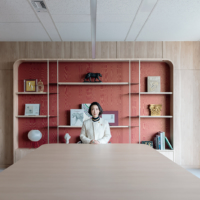Given the boom in all things Edo in recent years — perhaps best exemplified by the explosion of interest in last year's The Price Collection's tour of Japan, featuring the artists Ito Jakuchu, Maruyama Okyo and Nagasawa Rosetsu — it is surprising that there hasn't been equal attention paid to the sculpture of the period.
In fact, the scant interest reflects the conventional thinking that the Edo Period (1603-1867) had no sculpture worth mentioning; religious sculpture deteriorated from the mid 13th-century Kamakura Period and supposedly was not resuscitated until Japan encountered Western forms in the 19th century. Kyoto National Museum's New Year exhibition, "An Old Man's Mischief: Playful Works by the Buddhist Sculptor Shimizu Ryukei," showing till March 30, provides the opportunity then to reevaluate what's been considered a "minor" period of three-dimensional art.
The rise and fall of religious sculpture was precipitous. Early sculptural works by 11th-century Heian Period sculptor Jocho and the later "Kei" school of Nara had fixed iconographic precedents for subsequent generations of busshi (Buddhist sculptors), suppressing innovation. Later, the forms of Buddhism that gained popularity in the 13th century — the Zen and the Pure Land sects — by their very nature simply required less statuary. Sculpture was still being made, of course, but the art form mattered less.


















With your current subscription plan you can comment on stories. However, before writing your first comment, please create a display name in the Profile section of your subscriber account page.